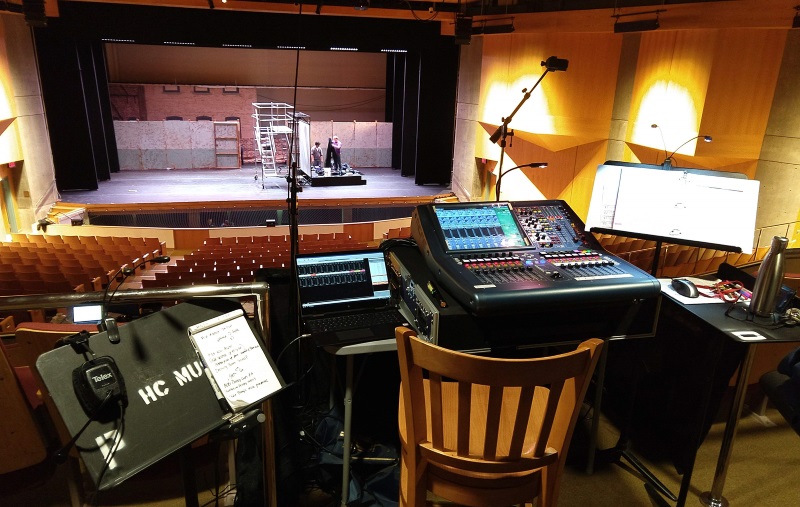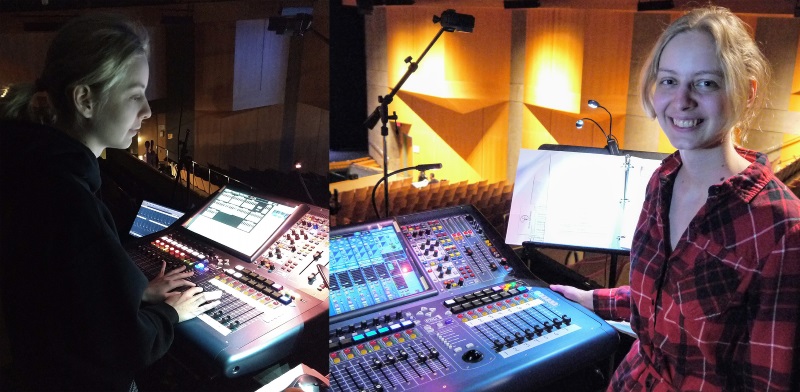My first real foray into event production came at the age of 14, running the lights for my school’s production of Oliver! The Musical. I badgered the venue’s tech director with endless questions and learned a lot.
Soon after, I saw a more metaphorical light and switched to audio, but the TD’s willingness to teach me has not been lost on me. Without that generosity, I might not be working in production today, and so “paying it forward” is something I feel strongly about.
I was recently given the opportunity to do so while working as the A1 for Hamilton College’s production of West Side Story, staged in Wellin Hall, the largest theater on the school’s campus in Clinton, New York.
The production’s sound design had a lot of moving parts: 24 channels of wireless mics on actors, a full live orchestra in the pit, and audio cue playback from the projection-mapped video system, to name a few. That’s a lot of plates in the air, but luckily I had the assistance of three awesome students who expressed an interest in helping out with the production and learning more about theater audio.
Getting Started
My first consideration was how best to deal with the gain-before-feedback realities of multiple omnidirectional condenser microphones on stage in a very reverberant space (a concert hall with an RT60 of about 2 seconds) and a full live orchestra. Although I know the space well, musical theater productions add a bunch of elements that I’m not as familiar with. In a quest for some perspective, I reached out to Dan Moses Schreier, the sound designer for the 50th anniversary Broadway production of West Side Story.
Dan graciously listened as I explained my plans for the design and gave me some tips. He suggested using photographs of the actors’ mic placements to ensure consistency each night. He also gave me some great advice about how I might approach miking the orchestra, and thanks to his wisdom I felt a bit more prepared going into production week.

Next up was the system coverage. Due to sightlines and the fact that the orchestra pit cover would be open for the show, my usual front fill positions were unusable. The college brought over three JBL 3 Series active studio monitors to fill the three main coverage gaps – the front outer edges and a “center gap.” An unconventional fill box, but they got the job done while being as small and unobtrusive as possible. To prevent an audience member from bumping a front fill into the orchestra, theater department TD Tom Marhenke built brackets to secure the front fills to the structural steel.
The show’s production design placed the traditional plot in a modern context, and the playback cues include several instances of approaching police vehicles as well as the infamous gunshot that kills Tony at the end of the show.
Production manager Jeff Larson and I had ongoing conversations about how to create a sonic environment that was extension of the narrative, rather than simply playing sound effects at the audience through the PA. We hid a JBL PRX powered loudspeaker behind the upstage wall of the set. This created some very convincing police siren “whoop whoops” which filled the performance space with a diffuse sound as if the squad car was just around the corner, causing the onstage gang member characters to scurry away.













